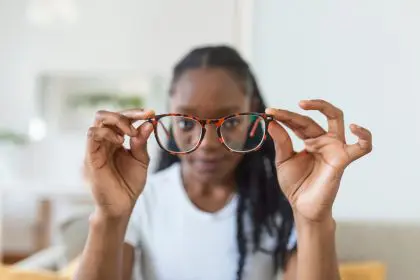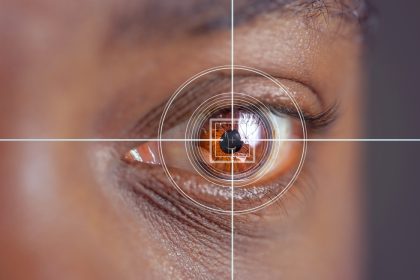Wearing sunglasses is a common practice to protect our eyes from the harmful effects of ultraviolet (UV) rays from the sun. Sunglasses help reduce glare, improve comfort and prevent eye strain in bright environments. However, wearing sunglasses inappropriately — especially in dark places — can have adverse effects on your vision. This article explores the reasons why wearing sunglasses in dark places hurts your vision and provides insights into the proper use of sunglasses to maintain optimal eye health.
How sunglasses work
Sunglasses are designed to reduce the amount of light that enters the eyes. They do this by using tinted lenses that filter out specific wavelengths of light. The primary purpose of sunglasses is to protect the eyes from excessive light exposure, particularly UV rays, which can cause damage to the eyes over time. By reducing the intensity of light, sunglasses help improve visual comfort and clarity in bright conditions.
UV protection and glare reduction
The most significant benefit of wearing sunglasses is the protection they offer against UV rays. UV radiation from the sun can lead to various eye problems, including cataracts, macular degeneration and photokeratitis (a painful condition similar to sunburn but affecting the cornea). Sunglasses with UV protection block these harmful rays, reducing the risk of these conditions.
Glare reduction is another crucial function of sunglasses. Glare occurs when light reflects off surfaces like water, snow or roads, creating intense brightness that can be uncomfortable and impair vision. Polarized sunglasses are particularly effective at reducing glare, making them popular among outdoor enthusiasts and drivers.
The impact of sunglasses in dark places
While sunglasses are beneficial in bright environments, wearing them in dark places can be detrimental to your vision. The primary issue is that sunglasses reduce the amount of light entering your eyes, which is counterproductive in low-light conditions.
Decreased visual acuity
Visual acuity refers to the clarity or sharpness of vision. In dark places, our eyes rely on the limited available light to see clearly. Wearing sunglasses in such environments further reduces the amount of light reaching the retina, leading to decreased visual acuity. This can make it difficult to see objects clearly, navigate safely and perform tasks that require good vision.
Eye strain and fatigue
When you wear sunglasses in dark places, your eyes have to work harder to gather enough light to see. This increased effort can lead to eye strain and fatigue. Symptoms of eye strain include headaches, blurred vision, and discomfort around the eyes. Prolonged eye strain can negatively affect your overall visual health and make it harder to concentrate on tasks.
Reduced contrast sensitivity
Contrast sensitivity is the ability to distinguish objects from their background. In low-light conditions, maintaining good contrast sensitivity is essential for detecting details and recognizing shapes. Wearing sunglasses in dark places diminishes contrast sensitivity, making it challenging to perceive differences in shades and patterns. This can be particularly problematic in activities like driving at night or walking in poorly lit areas.
When to wear sunglasses
Understanding when to wear sunglasses is crucial for maintaining optimal eye health. While it’s clear that sunglasses are beneficial in bright conditions, it’s equally important to recognize situations where they are unnecessary or even harmful.
Outdoors in bright sunlight
The most obvious and appropriate time to wear sunglasses is when you are outdoors in bright sunlight. Whether you are at the beach, hiking or driving, sunglasses can protect your eyes from UV rays and reduce glare, improving comfort and visual clarity.
Snowy or reflective environments
In environments where light reflects off surfaces, such as snow-covered landscapes or bodies of water, sunglasses are essential. They help reduce glare, prevent eye strain and protect your eyes from UV radiation. Polarized sunglasses are particularly effective in these situations.
Avoiding sunglasses in dark places
It is crucial to avoid wearing sunglasses in dark or dimly lit places. This includes indoor environments like theaters, restaurants and homes with low lighting, as well as outdoor settings at dusk, dawn or nighttime. In these conditions, your eyes need to absorb as much light as possible to see clearly and comfortably.
Tips for proper sunglasses use
To ensure you are using sunglasses effectively and protecting your vision, consider the following tips:
Choose the right sunglasses
Select sunglasses that offer 100 percent UV protection. Look for labels that indicate they block both UVA and UVB rays. Additionally, consider polarized lenses for activities involving glare, such as driving or water sports.
Use sunglasses during appropriate times
Wear sunglasses when exposed to bright sunlight or reflective environments. Remove them when you are in dark or dimly lit places to allow your eyes to gather enough light for clear vision.
Maintain your sunglasses
Keep your sunglasses clean and free of scratches. Dirty or damaged lenses can impair your vision and reduce the effectiveness of the sunglasses. Use a microfiber cloth to clean the lenses and store them in a protective case when not in use.
Consult an eye care professional
Regular eye checkups are essential for maintaining good vision and eye health. Consult an eye care professional to ensure you are using the right type of sunglasses and to address any concerns about your vision.
Rethinking wearing sunglasses in dark places
Wearing sunglasses is a vital practice for protecting your eyes from the harmful effects of UV radiation and reducing glare in bright environments. However, wearing sunglasses in dark places can hurt your vision by decreasing visual acuity, causing eye strain and reducing contrast sensitivity. Understanding when and how to use sunglasses appropriately is crucial for maintaining optimal eye health. By following the tips provided and consulting with an eye care professional, you can ensure that your sunglasses provide the best protection without compromising your vision in low-light conditions.
This story was created using AI technology.











